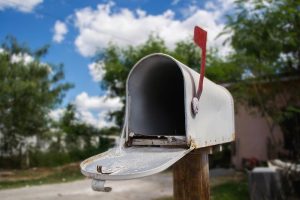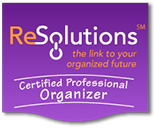
In our digital age, where emails and electronic communication reign supreme, the tangible mailbox might seem like a relic of the past. However, for many of us, paper mail and bills still find their way into our lives on a regular basis. Without proper organization, these physical documents can quickly become overwhelming, leading to missed payments, misplaced important documents, and unnecessary stress.
But fear not! With a few simple strategies and a bit of dedication, you can take control of your mailbox and conquer the chaos of paper clutter. Here below is a comprehensive guide to organizing mail and bills.
Designate a Mail Sorting Station
Designate a specific area in your home to sort through mail as soon as it arrives. It could be a desk, a countertop, or a dedicated mail sorting basket. The key is to have a designated space where you can immediately process incoming mail.
Sort Into Categories
As you sort through your mail, divide it into categories such as bills, personal correspondence, junk mail, and important documents. This step helps streamline the process and makes it easier to prioritize tasks.
Only Handle it Once (OHIO)
Adopt the habit of dealing with each piece of mail only once. Open bills immediately and discard envelopes and unnecessary inserts. If possible, opt for paperless billing to reduce the amount of physical mail you receive. However, do be careful to LOOK at the bills when you get an email notification of bill being ready online. Too many of my clients do NOT look at the bills, and there can be fraudulent charges that are overlooked. Worse, bill do not get paid because the email is either ignored or buried in and among all the other vast amount of email received each day.
Create a Filing System
Establish a filing system to organize important documents such as tax forms, insurance policies, and medical records. Use labeled folders or a filing cabinet to store these documents in a secure and easily accessible manner.
Set Up a Bill Payment Schedule
Create a bill payment schedule to ensure that you never miss a payment deadline. You can use a physical planner, a digital calendar, or bill management apps to keep track of due dates and payment amounts.
Consolidate and Opt-Out
Take proactive steps to reduce the amount of unwanted mail you receive. Opt-out of unsolicited catalogs and advertisements. Consider consolidating accounts to receive fewer statements and bills. Click on the “unsubscribed” button on unwanted email.
Go Digital
Embrace digital solutions for managing bills and documents whenever possible. Many banks offer online bill pay services, and apps like Evernote or Dropbox can help you digitize and organize important documents. Again, you must make sure you are totally on top of this, or bills will get lost and not paid.
Shred and Dispose Securely
Dispose of sensitive documents securely by shredding them before discarding. This helps protect your personal information and reduces the risk of identity theft.
Stay Consistent
Make a habit of sorting through your mail regularly to prevent buildup and maintain an organized system. Set aside a specific time each day or week to tackle incoming mail and bills.
Review and Adjust
Periodically review your mail management system to identify areas for improvement. Adjust your strategies as needed to optimize efficiency and reduce clutter.
If you need help, just ask a Professional Organizer like me to come set up or help you fine tune your system.
Photo: Pixabay

 Join My Email List
Join My Email List